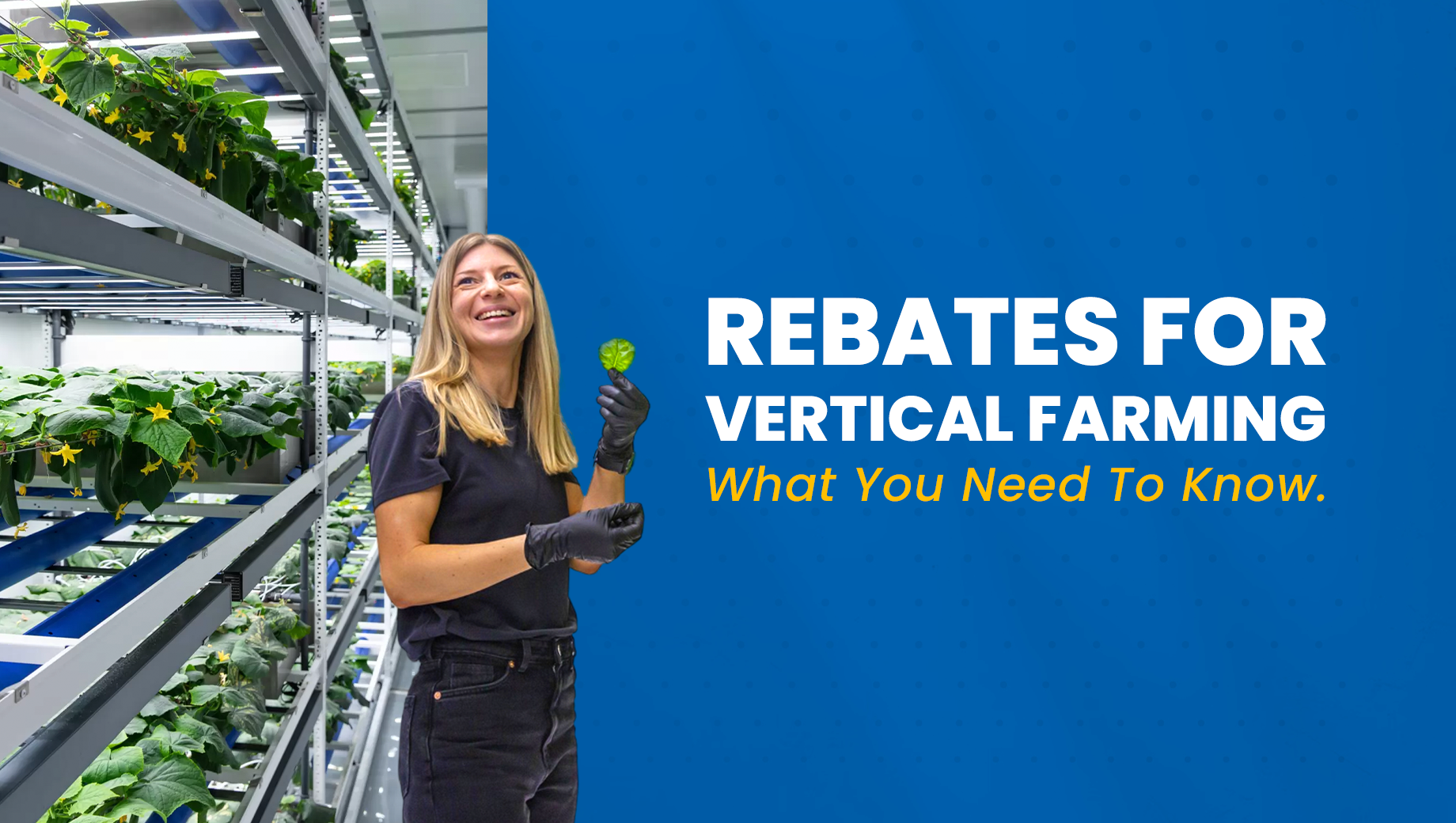
As the global demand for sustainable food production rises, vertical farming has emerged as a game-changing solution. Its ability to maximize crop yield while using less space, water, and resources makes it an attractive option for modern growers. However, setting up vertical farming systems can come with significant upfront costs. Thankfully, utility rebate programs can ease some of that financial burden.
In 2024, vertical farming operations can take advantage of a range of rebates that support energy efficiency, primarily focusing on grow lights, HVAC systems, and other energy-saving technologies. Here's what you need to know about top rebate programs and how they can boost your vertical farming profits.
Vertical farming uses stacked layers to grow crops in controlled environments, which allows for year-round production and maximizes space. It is particularly popular in urban areas where land is scarce, and because it uses less water and pesticides, vertical farming is seen as a sustainable solution to feed growing populations.
There are several categories of rebates that vertical farming operations can qualify for:
- LED Lighting Rebates: Many utility companies offer significant rebates for upgrading to energy-efficient LED grow lights. LED lights use less electricity, produce less heat, and last longer than traditional lighting systems, making them an essential part of vertical farming setups.
- HVAC and Dehumidification Rebates: Controlling the environment is crucial in vertical farming. Rebates are available for efficient heating, ventilation, air conditioning, and dehumidification systems that reduce energy consumption while maintaining the ideal growing conditions for crops.
- Automation and Control Systems: Advanced control systems that monitor and adjust temperature, humidity, lighting, and irrigation can also qualify for rebates. These technologies ensure the precise management of resources, leading to further cost savings in the long run.
Qualifying for rebates requires meeting specific criteria set by utility companies and state or local governments. For example, many utility providers require an energy audit before offering rebates. This process helps identify where your operation can improve efficiency and where rebates are applicable.
Navigating the rebate landscape can be complex, but working with a rebate service provider, like What Rebates, simplifies the process. These experts have an in-depth understanding of rebate programs and can guide you through the application process, ensuring that you meet all requirements and to ensure that the products you install—whether it's LED lights, HVAC systems, or control software—are listed as energy-efficient and meet the program's qualifications.